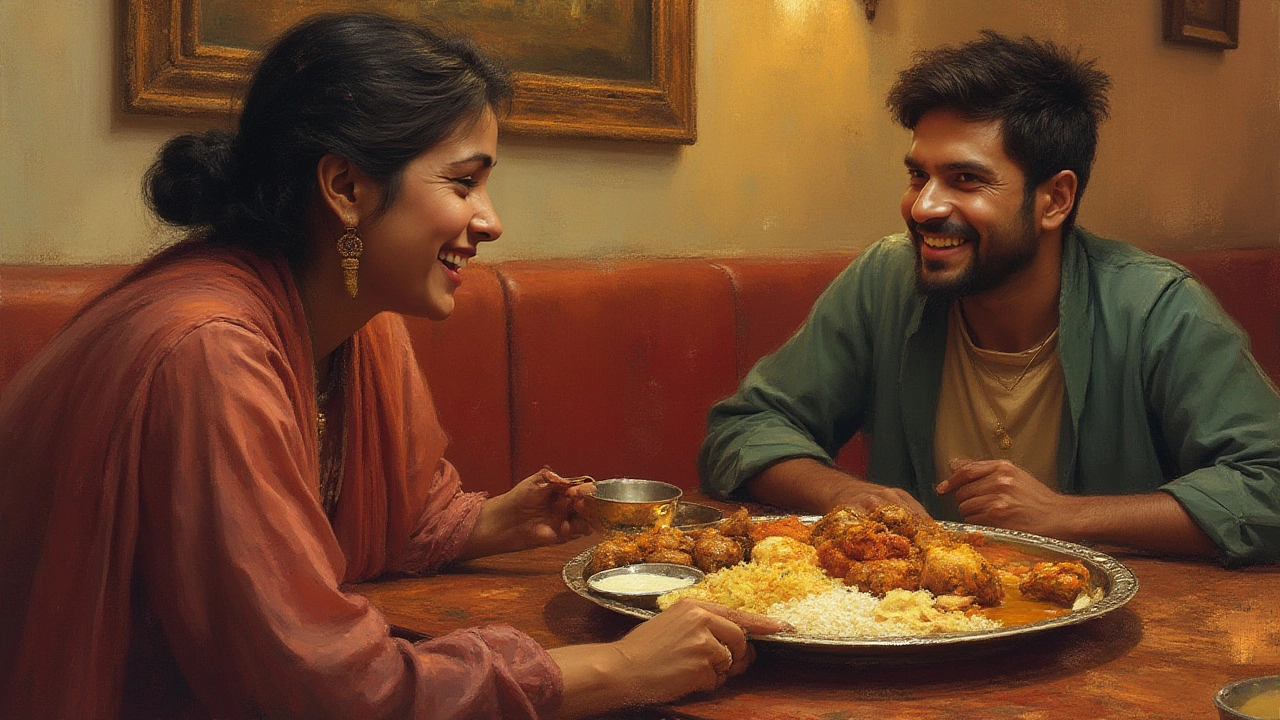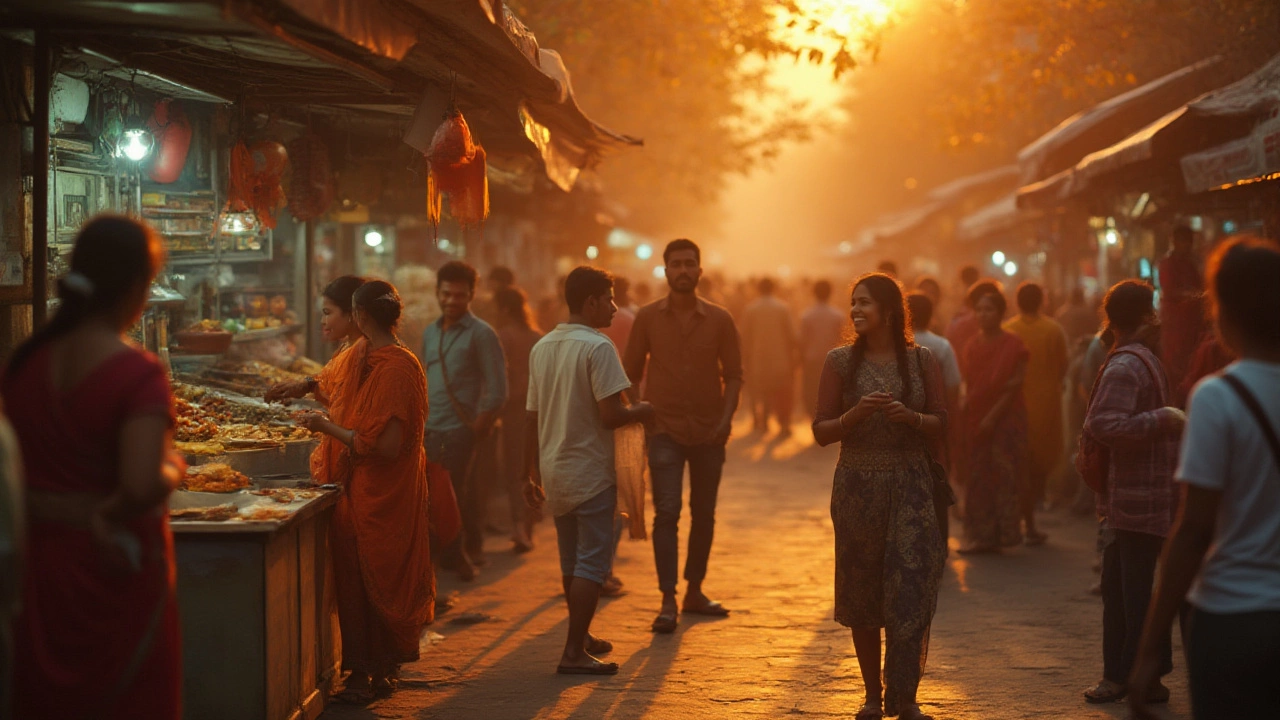Land in India and the world turns technicolor. You look around, and it’s an explosion—sights, scents, noises—your senses work overtime. But the biggest jump? The food. Indian cuisine is bold, layered, unexpected, and packed with so many spices that your tongue might need a crash course just to keep up. For Americans, this is next-level. Forget bland French fries or greasy cheeseburgers—here, every meal feels like a culinary adventure. But there’s that inevitable first worry: What if a bite sends you running to the bathroom? Or what if nothing tastes familiar at all? Turns out, you’re far from alone in thinking this. Millions of Americans visit India each year, and most end up loving the food—once they figure out what (and how) to eat. You just need a game plan.
Understanding Indian Cuisine: Going Beyond Curry
Ask the average American what Indian food is, and you’ll probably hear one word: curry. The truth is, “curry” means a hundred different things across India—sometimes, it’s not even curry at all! Indian cuisine is a patchwork of regional styles. In the North, it’s all about rich, creamy gravies and breads like naan and paratha. The South serves tangy dosas, rice pancakes, and lentil-based stews like sambar. Head out west to Gujarat, and you’ll find sweet, tangy vegetarian fare. On the East coast, spicy fish and rice rule.
That’s just the broad strokes! There are tens of thousands of smaller, local dishes you can’t find back home—sometimes not even in the next state over. Statistically speaking, over 40% of India’s population is vegetarian, so there’s a massive variety of plant-based dishes that don’t compromise on flavor. There’s also an impressive range of breads and snacks. While many Americans think naan is the go-to bread, locals might reach for soft roti, deep-fried puri, or fermented, fluffy idli cakes instead.
It can be a culture shock for your tastebuds. Indian food is built on layers—spices like cumin, coriander, turmeric, cardamom, cinnamon, chili, and countless blends. Sauce bases vary by region: creamy tomato (butter chicken), tangy yogurt (kadhi), or fiery coconut (Kerala fish curry). Even ‘mild’ dishes might pack heat by your standards, with green chilies and pepper woven in. It’s easy to get overwhelmed at first, but think of it this way: Every region has its own comfort food, just like the U.S. has mac’n’cheese in one state, tacos in another.
Here’s a wild fact: India boasts over 2,000 distinct ethnic groups and more than 1,600 languages, which means the food changes dramatically every few hundred miles. So, eating in India isn’t just trying new flavors—it’s eating your way through entire worlds within one country.
Must-Try Foods for Americans in India
Let’s get to the bit you’re really here for: what should you actually order? With so much choice, you don’t want to waste your appetite on something dull or end up ordering an inedibly spicy dish. Here’s the best plan: Start safe, then get bolder.
- Butter Chicken (Murgh Makhani): It’s creamy, tomatoey, and crowd-pleasing. If you like grilled chicken or pasta Alfredo, you’ll love this.
- Dal Tadka or Dal Makhani: Comforting lentil stews, fragrant and sometimes rich, perfect with rice or bread.
- Paneer Dishes: Try Paneer Tikka (grilled cheese cubes), Saag Paneer (spinach and cheese), or Paneer Butter Masala. All satisfying and usually not too spicy.
- Biryani: A rice and meat (or veggie) dish layered with flavor. Hyderabad and Kolkata are famous for theirs, and it’s never just ‘rice’—expect deep, heady aromas.
- Samosa: Fried pastry pockets usually stuffed with spicy potato. Street staple, cheap and always tempting as a snack.
- Masala Dosa: Thin, crispy fermented rice pancakes wrapped around curried potatoes. Especially famous in the South.
- Chole Bhature: Spicy chickpea curry with puffed, fried bread. Hearty and great for a filling lunch.
- Gulab Jamun: Soft, syrup-soaked dough balls for dessert. Super sweet but a rite of passage.
- Tandoori Chicken: Marinated and roasted chicken with a smoky edge. Usually safe for American palates.
If you’re vegetarian—or just looking to eat more plant-based while traveling—India is paradise. Expect menus packed with veggie curries, lentil-based snacks, and fresh breads. And don’t ignore the street food! If you stick to busy stalls where locals are lining up, you can usually trust the hygiene and catch the best flavors. Famous cities like Delhi and Mumbai are known for their street eating culture, offering everything from spicy pani puri (crispy shells with potato, chickpea, and flavored water) to sweet jalebi (deep-fried, syrupy spirals).
Americans who miss home comforts might be surprised: Pizza, burgers, and sandwiches are everywhere in Indian cities now—though often with a spicy twist. McDonald’s India famously skips the beef and offers a McAloo Tikki (potato patty) burger. Domino’s India tops pizzas with tandoori paneer instead of pepperoni. If you’re feeling nostalgic, you won’t go hungry. But trust me: stepping a little outside your comfort zone pays off big.

What to Watch Out For: Health, Hygiene, and Spiciness
Here comes the blunt reality—food in India is tasty, but “Delhi Belly” is real for unprepared travelers. You can dodge it if you follow some smart rules. First, filter your water. The tap water isn’t safe to drink for most visitors, so go for bottled water with a sealed cap, or use a filter bottle. Want a cold drink or juice? Double-check that ice is made from filtered water—sometimes it’s not.
When eating street food, hygiene matters more than what’s for sale. If you see a busy crowd, that’s usually a good sign; locals don’t risk a bad meal either. Scope out how food is being prepared—hot and freshly cooked is always safer than uncooked salads or cut fruit that’s been sitting out. Don’t shy away from street eats; just be smart—skip stalls with little turnover and go where you see the most people waiting. Vendors selling chaat (tangy snacks), hot samosas, or freshly fried pakoras are usually reliable. Fun fact: in a 2022 travel survey, 78% of Americans who got food poisoning in India said they ate raw vegetables or fruit from unknown sources. Just something to remember.
Spiciness is another thing. Indian spice ‘heat’ comes not only from chili, but also strong, warming spices. If you’re unsure, mention “not spicy” (say, “bilkul teekha nahin” in Hindi) when you order, but know that everyone’s idea of “mild” is different. The good news? Yogurt (curd or dahi) is served with many meals and cools things right down. And bread—naan, paratha, or rice—helps, too.
Take a look at this simple table to spot common Indian spices and their effects:
| Spice | Indian Name | Flavor | Effect |
|---|---|---|---|
| Cumin | Jeera | Warm, earthy | Aids digestion |
| Coriander | Dhania | Lemony, floral | Calms the stomach |
| Chili | Mirch | Hot | Spicy kick |
| Turmeric | Haldi | Earthy, mild | Natural antiseptic |
| Cardamom | Elaichi | Sweet, menthol-like | Refreshes palate |
| Cinnamon | Dalchini | Sweet, woody | Sweet aroma |
Don’t go overboard—start with cooked foods and increase your spice level gradually. Carry a charcoal tablet or Pepto-Bismol tabs as backup if you have a sensitive stomach. Try a probiotic yogurt a day if you need a gut fortification strategy.
Making the Most of Indian Food: Tips, Etiquette, and How to Order
Eating out in India is different from grabbing a bite in the States. For one, time moves a little slower—people tend to sit and enjoy conversations over meals, and communal sharing is the norm. Food is often served family-style, with lots of small dishes on the table for everyone to sample. Don’t stress about ordering everything yourself; if you’re eating with locals, they’ll likely order for the table and you’ll get to try a bit of everything.
Many Indian meals are eaten with the hands—usually the right hand only. This can feel weird to Americans addicted to forks and spoons, but there’s a certain satisfaction in scooping curry with a piece of bread or mixing rice and dal with your fingers. If you’re not comfortable, cutlery is available in most restaurants—but if you want to go local, just wash your hands well and dive in.
Menus often separate “Veg” and “Non-Veg” sections, reflecting India’s diverse religious and cultural taboos. If you have food allergies, say so very clearly—English is spoken in most urban restaurants, but always double-check to be safe. Many places use nuts or dairy in sauces; clarify if you need food without them. And don’t be surprised that beef is rare, with much of the population Hindu—chicken, goat, fish, or vegetarian dishes fill the gap. Pork is less common, but you’ll find it more in the Northeast or Goa, where Catholic and tribal communities live.
Handy tips when eating out or ordering food in India:
- Lunches are often bigger than dinners—the meal might come with several ‘sabzis’ (curries), breads, rice, pickles, and yogurts.
- If you see “thali” on the menu, that means a mixed platter of many foods—perfect for sampling.
- Brunch in India is a thing, especially on Sundays, with buffets featuring a little of everything.
- Breakfast can be hearty—try idli, dosa, or stuffed paratha with tea (chai).
- Don’t skip tea shops; Indian chai is addictive, spicy-sweet, and usually boiled with milk and sugar.
- When in doubt, trust your nose—if something smells off, skip it.
- Food delivery apps (like Zomato or Swiggy) make trying local restaurants even easier, and reviews help you figure out safe, tasty picks.
One thing most Americans don’t expect: Indian sweets are on another level. There’s a whole culture around mithai (sweets), with hundreds of varieties—barfi, laddu, rasgulla, and jalebi are just the start. Don’t leave without sampling a few, especially during festivals or from a reputable sweet shop.
The last thing? Embrace the unexpected. Indian cuisine is more than just food—it’s a window into the country’s psyche, history, and traditions. And if you end up craving a cheeseburger, well, you’ll find something close—but I bet you’ll have new favorites by the time you leave.
Trying Indian food as an American can feel like flipping on the color setting in your food life. It’s bold, sometimes wild, never boring, and always full of stories. Grab a fork (or your fingers), dig in, and don’t forget: the best meals in India are often the ones you didn’t expect.
